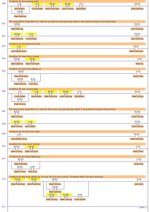new member,logixpro student
- Thread starter ijr900
- Start date
Similar Topics
Is there a way to use the FAL instruction to do +=2 instead of +=1? I have an array that is organized with alternating "data" and "flag" values...
Square D had a group that wanted to develop PLC compatible power monitoring. They worked out of the Cedar Rapids circuit breaker plant - before...
Hi!
Omron CP1L. CX Programmer. How do I fix so that a CNTRX(548) remembers the count it had before a power failure?
I need to know how many...
Hello all new member here. Have upgraded to supporting member status as I will likely be her asking help quite often.
My situation is I just last...
New member here.
I'm going to a site tomorrow for the first time to work on a GE Versamax CPU005. The fault light is on, so I need to get online...






